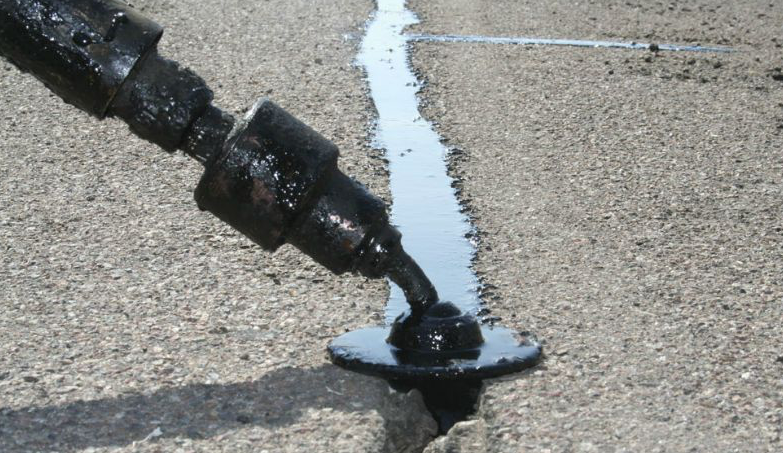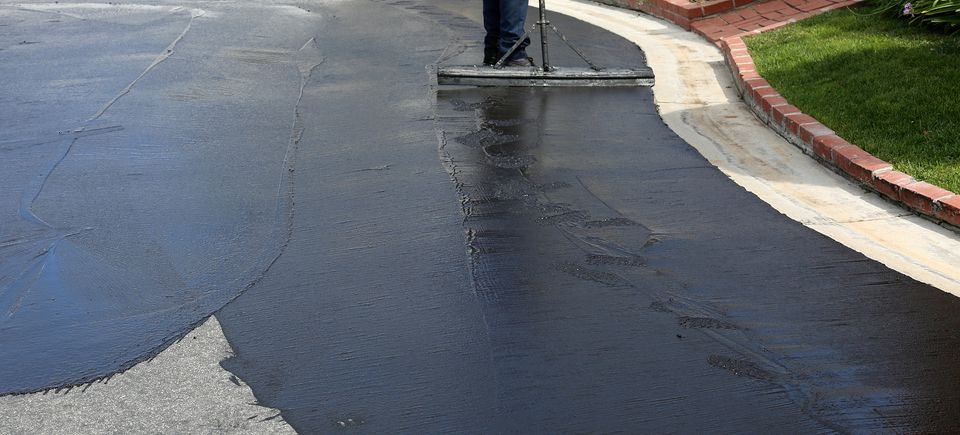Maximize Longevity: Warm Mix Asphalt Sealing for Angled Parking Frameworks
Maximize Longevity: Warm Mix Asphalt Sealing for Angled Parking Frameworks
Blog Article
Warm Mix Asphalt: A Sustainable Option for Sidewalk
Warm Mix Asphalt (HMA) has emerged as a leading lasting selection for sidewalk services, offering a myriad of ecological benefits and innovative modern technologies. As the need for environment-friendly building and construction techniques expands, checking out the nuances of HMA's sustainability can supply beneficial insights right into the future of pavement remedies.
Environmental Advantages of Warm Mix Asphalt

In Addition, Hot Mix Asphalt aids to alleviate city warm island results. Its dark color takes in sunshine, minimizing the amount of warmth reflected back right into the atmosphere compared to lighter-colored sidewalks. This can decrease ambient temperatures in city areas, lowering the demand for air conditioning and ultimately minimizing energy usage.
Furthermore, Warm Mix Asphalt adds to boosted stormwater management. Its porous nature permits water to recharge and infiltrate the sidewalk groundwater supplies, decreasing overflow and the danger of flooding. These ecological benefits make Hot Mix Asphalt a sustainable choice for paving roadways and freeways.
Energy Effectiveness in HMA Manufacturing
Is power efficiency a critical variable in the manufacturing of Warm Mix Asphalt (HMA)? Absolutely. Power plays a significant role in the production of HMA, affecting both cost and ecological sustainability. One key element of energy effectiveness in HMA production is using cozy mix asphalt (WMA) modern technologies (hot mix asphalt). WMA enables the blending and positioning of asphalt at reduced temperature levels contrasted to traditional warm mix asphalt, leading to lowered power consumption throughout production. This procedure not only decreases gas usage yet additionally reduces greenhouse gas exhausts, making it an extra eco-friendly alternative.
In addition, developments in plant modern technologies have led to even more energy-efficient HMA manufacturing procedures. By optimizing power use in HMA production, the market can decrease its carbon impact while preserving high-grade pavement materials.
Recyclability of Warm Mix Asphalt
The recyclability of Warm Mix Asphalt (HMA) is a pivotal element of its sustainability and lasting environmental effect. HMA is among one of the most recycled products in the USA, with over 100 million loads of recovered asphalt sidewalk (RAP) being recycled annually in new sidewalk building and construction. Recycling HMA provides several environmental advantages, such as decreasing the requirement for virgin products, lowering energy usage throughout production, and reducing the quantity of waste sent out to garbage dumps.
The process of recycling HMA includes grating the existing pavement, squashing it right into smaller sized items, and blending it with brand-new aggregate and asphalt binder to create a recycled mix. Generally, the recyclability of HMA plays a considerable duty in promoting sustainable methods within the pavement market.

Long-Term Efficiency of HMA
Asphalt sidewalks demonstrate sturdiness and durability over an extensive duration, reflecting the long-lasting efficiency of Warm Mix Asphalt (HMA) The durability of HMA can be credited to its capacity to withstand hefty website traffic loads, harsh weather, and the results of aging. Researches have actually revealed that properly designed and effectively created HMA sidewalks can last for 20 years or more with normal upkeep. The trick to optimizing the long-term performance of HMA lies in making use of high-quality products, adhering to best practices in construction, and implementing effective upkeep methods. Proper drain, regular evaluations, and timely fixings are crucial for protecting the structural honesty of HMA sidewalks in time. Additionally, innovations in HMA innovation, such as the use of polymer-modified binders and warm mix asphalt, have better improved the resilience and longevity of HMA pavements. By prioritizing top quality building and upkeep methods, HMA remains to verify itself as a economical and sustainable remedy for lasting pavement facilities.

HMA: Resilience and Sustainability
Demonstrating both look at this website sturdiness and sustainability, Warm Mix Asphalt (HMA) has ended up being a cornerstone in the construction of durable sidewalk infrastructures - commercial parking lot paving. HMA's sturdiness stems from its ability to stand up to hefty tons, extreme climate condition, and high traffic quantities, making it a trustworthy choice for highways, highways, and airport terminal runways. The make-up of HMA, which usually consists of aggregates, binder, and filler, plays an important role in improving its longevity and resistance to tear and put on
Furthermore, HMA's sustainability exists in its recyclability and energy-efficient manufacturing process. The capability to recycle reclaimed asphalt pavement (RAP) in brand-new HMA combinations lowers the demand for virgin products and minimizes the environmental effect of sidewalk building and maintenance. Additionally, the power efficiency of creating HMA hinges on its lower blending temperatures compared to other sidewalk products, bring about reduced power intake and greenhouse gas emissions.
Verdict
To conclude, warm mix asphalt (HMA) provides a lasting solution for pavement with its environmentally friendly qualities. HMA's recyclability, power efficiency in production, and long-lasting durability make it an environmentally friendly option for road building. By preserving natural deposits, lowering waste, and decreasing greenhouse gas exhausts, HMA plays an essential duty in promoting sustainability in infrastructure advancement. Its capability to reduce metropolitan heat island impacts better emphasizes its relevance in producing durable and eco conscious pavement systems.
HMA is one of the most recycled products in the United States, with over 100 million lots of recovered asphalt pavement (RAP) being recycled every year in new sidewalk building and construction.The process of recycling HMA involves crushing the existing pavement, squashing it into smaller items, and mixing it with brand-new aggregate and asphalt binder to create a recycled mix.Asphalt sidewalks demonstrate longevity and strength over an extensive duration, reflecting the long-lasting performance of Hot Mix Asphalt (HMA) Furthermore, developments in HMA technology, such as the use of polymer-modified binders and look at this now cozy mix asphalt, have further improved the longevity and long life of HMA pavements. The capacity company website to recycle reclaimed asphalt sidewalk (RAP) in new HMA mixtures minimizes the need for virgin products and reduces the ecological impact of sidewalk building and construction and maintenance.
Report this page